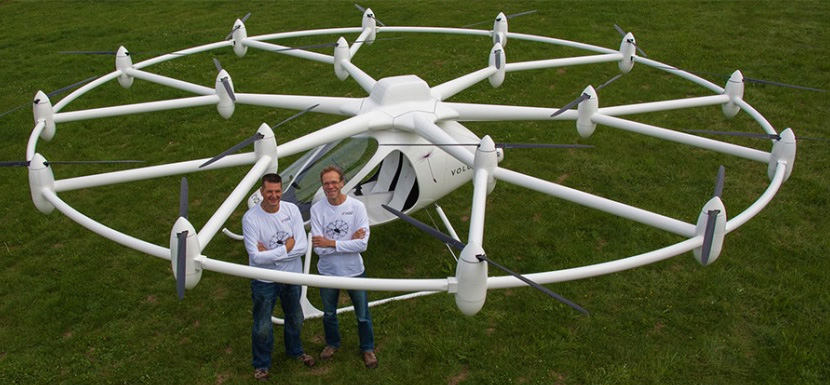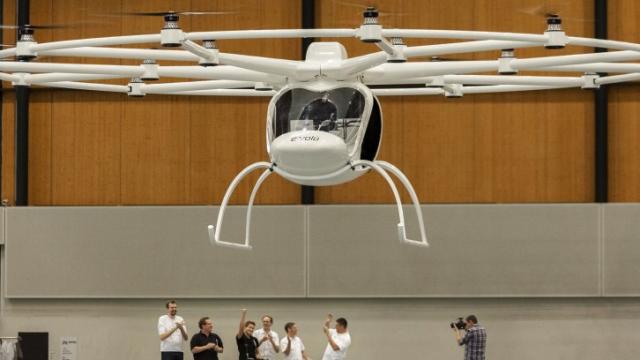Four small corner-mounted rotors has become the most common configuration for autonomous hovering aircraft these days. But it turns out that if you’re willing to add a few more rotors into the mix — like say 16 — suddenly you’ve got yourself an octodecacopter that’s strong enough to carry a couple of human passengers.
In other words: a helicopter. So why would anyone opt for this crazy configuration instead of just one big rotor spinning overhead? For starters, E-Volo’s Volocopter is completely electric, so there’s no harmful emissions. At the moment a series of redundant batteries power the craft’s 18 electric motors giving it about 20 minutes of flight time. But its creators are working to push that to a full hour, with a cruising speed of 100km/h.

The Volocopter is also incredibly quiet — at least compared to a traditional gas-powered helicopter with its giant single rotor blade hacking through the air. And it’s incredibly stable. The ring of rotors eliminates any natural spin of the craft, while on-board software ensures the pilot simply needs to tell it what direction to go. So forget flying cars, maybe this is the airborne personal commuter we’ve been waiting for all these years? [E-Volo via Gizmag]

